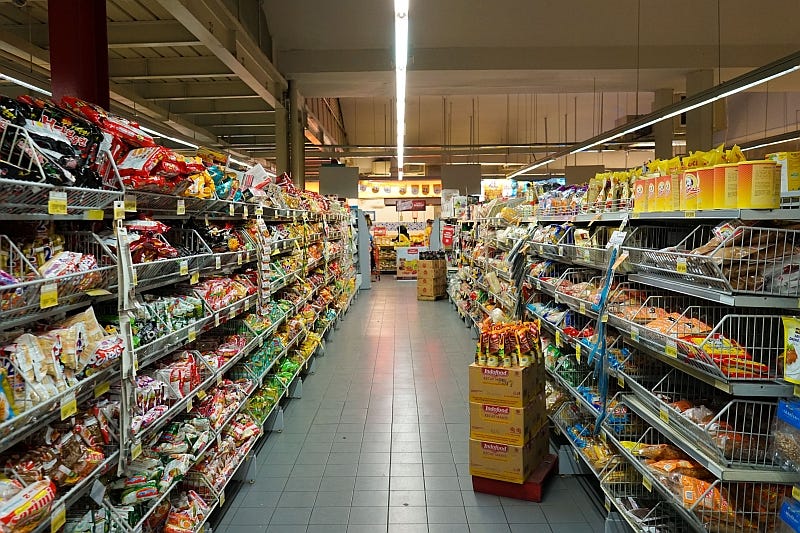Photo by Fikri Rasyid on Unsplash
In 1916, a grocer in Memphis in the United States opened the world's first supermarket.
And it was called Piggly Wiggly
It wasn't Walmart or Tesco or Target.
And he opened it for a very clear reason. To drive up his profits.
He found that his assistants were spending most of their time serving customers.
If he had to increase sales, he would need to employ more assistants.
He decided that customers would do all the work.
Walk into the store, pick up what they wanted and queue up at the billing counter.
All he required were people to stock the shelves as they emptied.
Apparently, the first supermarket had everything - from turnstiles to enter to wire baskets for shopping.
Much like the office clip. An invention that didn't need to change for a century.
Clarence Saunders, the grocer who started it all patented the concept.
And made a fortune from franchising it to others across the country.
For customers, the main draw was the price. And that beat everything else.
People went great distances to get the cheapest prices they could
Nothing has changed.
This post is derived from 'Hungry Cities' written by Carolyn Steel
When habits change radically, markets tremble
Every home has a rhythm. The family has a well-practiced routine right through the day.
Breakfast. Lunch. Dinner. Family time.
It's not really discussed and agreed upon but evolves as a matter of course.
All of these have their own set of products built around them
Even within the family people have well defined personal spaces and schedules.
When guests arrive, a new set of dynamics is in play as long as they are around.
Perhaps one of the biggest changes in long-term habits is when newlyweds begin to live together.
Which toothpaste do you buy? Or fridge? Do you like ornate furniture or clean lines?
The definition of that space and settling into a routine have their own set of friction points before they smooth themselves out.
One of you likes takeout. The other doesn't. One likes action films. The other likes romances.
With the prolonged lockdown, you're seeing the pendulum swing.
Which masks should we buy?
What do we splurge on and where do we cut back?
These individual decisions ripple outwards into the market and right through supply chains.
We've never seen habits change on this scale ever.
Problems and opportunities are locked into the same spaces.
Which way do you go?
Shouting at the top of your phone
In this case, it's not lonely at the top. It's packed.
Have you seen the crowd of icons jostling for space up there?
Standing room only, especially if you've enabled notifications.
Airtel has managed to stuff 'PLATINUM' there. In all caps, no less.
Right next to the simple notification that tells you the phone is receiving a signal.
Apps manage to get into your phone only to get lost in the depths of your app horde.
If you've disabled notifications by default, how do they remind you?
The design of the logo to fit into that narrow space on the top line has become super important.
It can't be a simple resizing. It has to do something to get you to jab at it all over again.
The problem is that these apps may not be a daily requirement.
Like travel and ticketing, for example
So they have to get creative.
They steal into your lock screen space.
And then, they have to figure out how to engage without annoying.
Disaster is getting uninstalled. Banished forever.
If you're not on one of the home screens, you might as well be invisible.
How are developers and designers coping, I wonder?














Share this post